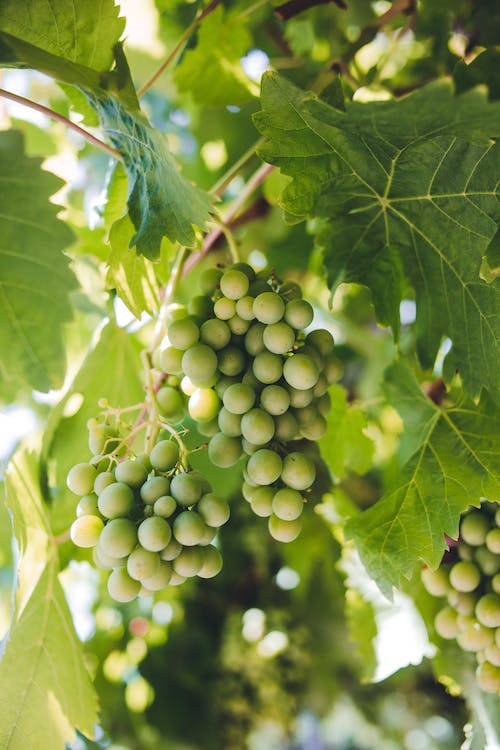Growing grapes might not sound like your average gardening project, but more like something confined to the vineyards which yearly produce wine…
However, a couple of weeks ago while walking past a semi-detached house locally, we noticed vines clambering along a trellis at the side, and clusters of small green grapes. It looked wonderful, although we weren’t brave enough to reach over the fence and pick a grape to test the sweetness.
People don’t think of most areas as they think of France or Italy when it comes to wine, but the Romans planted vineyards in the UK, so they can also be found there. In fact, in the past couple of decades small wineries have been springing up in many different counties, and the vintages produced lauded by wine-buffs. While you may not be that ambitious it is still possible, with some preparation and care, to produce bunches of luscious fruit.
As a general rule, the south of England is the best place for growing grapes; it tends to be milder and receive more sun, but this does not mean that people living further north in any country cannot try their hand at it. It’s just worth remembering that grapes love a lot of sun, and thinking about the average climate of your area.
Soil and Siting.
Growing grapes is not advisable on the ground that is waterlogged. They need good drainage, a sandy or stony soil being the best. Clay or chalk is not ideal. Because they need a lot of sunlight, a south or southwest facing position should be chosen, and with shelter from late frosts and strong, cold winds. If you are planting the vines in rows, the line should run north-south, so that both sides of the plant benefits.
Support the Vines.
Vines naturally clamber, and in the wild, they will often climb trees to reach the top where the fruits can ripen, while the roots are fed by the rich leaf-mold below. If you’re growing against a wall or fence, you will need to give them something to climb, and this is usually achieved with a trellis or galvanized supporting wires. Stretch these horizontally 8 inches from the wall, and 12 inches apart. These are attached to vine ‘eyes’ (metal supports which bend at one end and form an eyelet to pass the wire through.) They are fixed to the wall with a drill. If you grow in the open, stretch the wires and affix to timber posts about 12 inches apart, with the bottom wire 18 inches above the soil, to avoid mud splashing.
Preparation.
Dig down into the planting pit at least 18 inches, picking out any lumps of clay subsoil. Add a generous amount of well-rotted old compost or manure to the bottom of the pit, (it’s important for the compost to be old, as fresh manure burns the roots of the plant) then back-fill with light and loamy topsoil, which should be mixed with grit or gravel to provide the drainage the vines need. Vine roots need to be kept cool, so laying stones or slabs of slate over the earth will prevent the soil from becoming too warm.
Planting.
It’s best to plant in the late autumn or early spring, though if you live in a region that experiences generally mild winters, it is possible to plant them in that season. The plants should be spaced at least five feet apart.
Training.
The first couple of years should involve training a framework of vines, tying the side branches horizontally, but not too tightly, as this can affect later growth. Liquid feed is recommended once every month. The wines will produce fruit, but the bunches should be thinned by two-thirds of the grape for these first years.
First Harvest.
Plan on the third year being the first for really usable fruit. At the beginning of that year mulch with well-rotted manure, and no longer add liquid feed over the summer. When the bunches form, this time thin each cluster by one third. In late July, remove some of the foliage from around the grapes to allow them greater sunlight.
At the end of the year, tie in the new shoots, and cut back by about 25%. This will encourage new fruiting spurs next year. To prevent pests overwintering in the stems and buds, tar washing is recommended. Jeyes Fluid, bought from any supermarket or garden store is what most people use, with one part of the fluid to 30 parts of water. The mixture is then sprayed onto the vines and branches until it runs off into the soil. However organic gardeners may not like the idea of this, as Jeyes Fluid is powerful stuff.
Fortunately, there are organic pest control methods available.
Also, it’s good practice to encourage natural predators into your garden, by growing a variety of plants, including flowers. This will lessen the chances of disease, as will choosing resilient cultivars of the vine.
Growing grapes does require a little prep work, but with the sweet fruit and the glorious colors of the leaves, its rewards are great.

